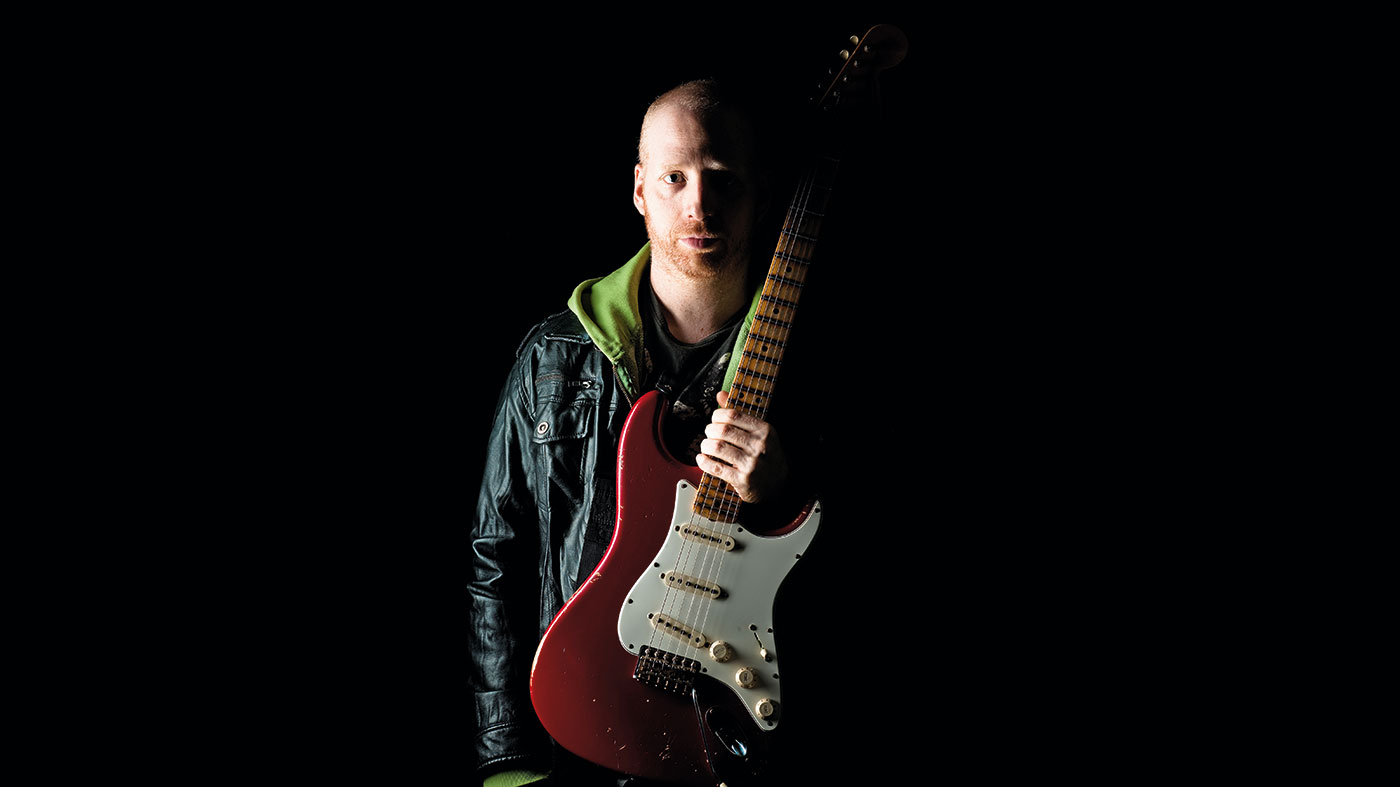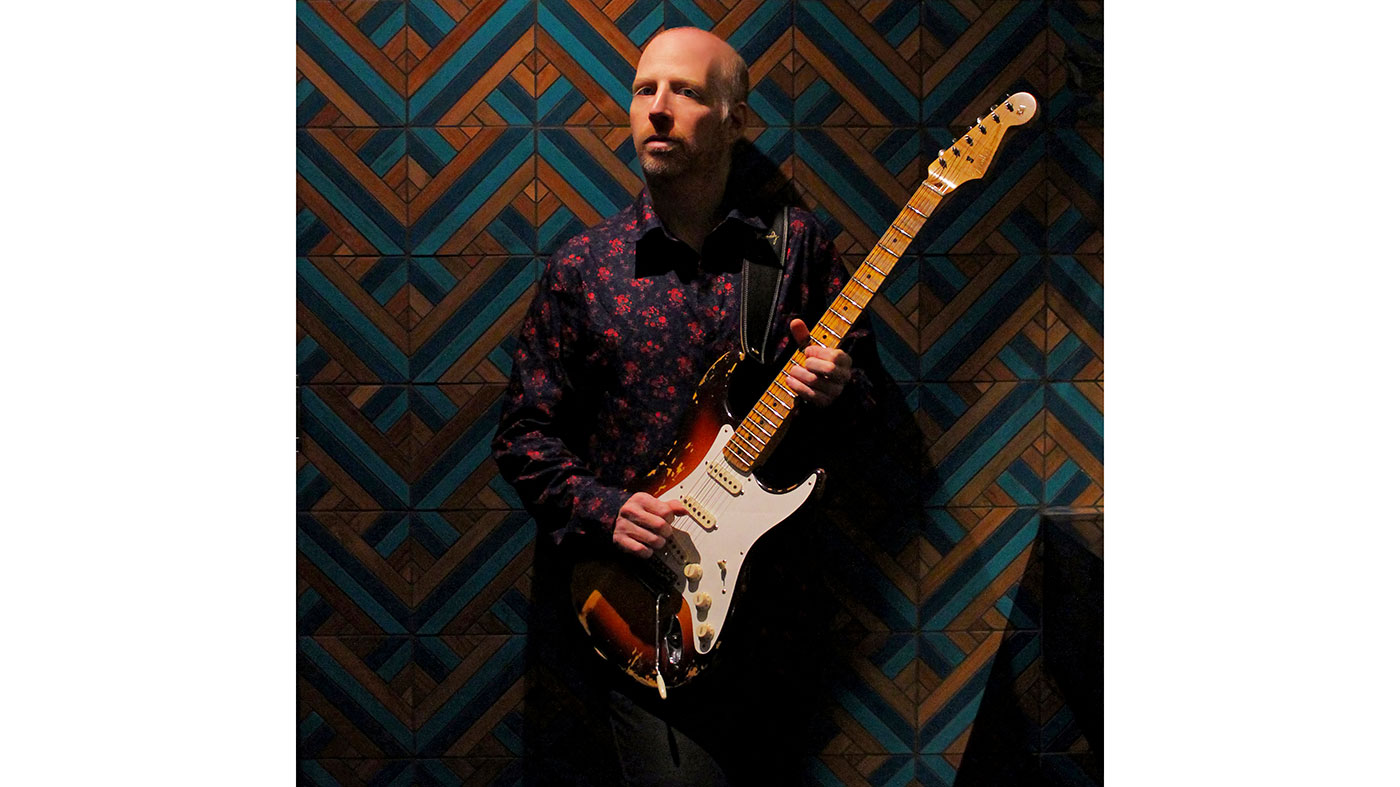Oz Noy: “The main problem with teaching guitar today is YouTube. People try to take shortcuts”
The dedicated teacher and fusion maestro

Apart from being one of the most fearsomely talented jazz-fusion guitarists around, Oz Noy is also a dedicated teacher, having authored his own online guitar course - called Twisted Guitar - via the Musicians’ Institute in Hollywood, LA.
The theory behind it is embedded in jazz, which, Oz insists, is the only way to shore up the walls of your musical knowledge base enough to handle anything the current music scene can throw your way. If you want to know the get-out-of-jail-free scales that will save your reputation from coming to harm at anywhere from the local open-mic jam to the world’s top studios, Oz has the answer.
I think 90 per cent of the stuff on YouTube is crap - it’s deceiving
He’s also fairly sure about where many guitarists can take a wrong turn: “The main problem with teaching guitar today is YouTube. People try to take shortcuts and there are no shortcuts studying music…” he tells us during our conversation.
“I think 90 per cent of the stuff on YouTube is crap - it’s deceiving. It’s not the right stuff that you need to learn, and I have tons of students that come to me and I can see that they try to take the shortcuts and I tell them, ‘This ain’t gonna work; you’re not going to get where you want to with this.’”
Where can aspiring players who wish to learn from an online source go, assured that they are learning the right stuff?
“There are great places to study if you go to the right people: if you go MI, TrueFire, My Music Masterclass… there’s a couple of really great online schools where they have real legit players and they teach it pretty thoroughly. That’s fine, but with a lot of people it’s, ‘Let me see how I can play a Slash solo’ or whatever. That kind of stuff’s not going to lead you anywhere.
“To me, that’s the problem. I don’t teach people solos. I teach people concepts, so that they can develop their own playing. I guide them towards what I think they should transcribe - like, if you want to study jazz, you should transcribe Charlie Parker. If you want to study blues, you should transcribe BB King.”
Get the MusicRadar Newsletter
Want all the hottest music and gear news, reviews, deals, features and more, direct to your inbox? Sign up here.
So you think a lot of students are missing out on the basics?
“I see the exact same problems with everybody and the problem is they don’t understand the basics, so they think they can try to play the fanciest stuff, but it’s not going to sound good unless you know where things are coming from. It’s good to know some theory and the best way to learn theory is through jazz. You don’t have to be a jazz player, but if you want to understand how this thing works, it’s a good way to learn. You have to study theory. You have to study chords, voice leading, scales, arpeggios, rhythm. This is what music is made of. I know it sounds boring and I know it sounds very unexciting, but that’s what it is.”
Good time, had by all
John Williams told us that guitarists in the classical world spend so much time practising alone, that when they begin to play in ensembles their timing just isn’t focused enough…
“You have to practise with a metronome and you have to be aware of rhythm - that’s the weakest part of guitar players. When you are a drummer or a bass player, your whole world is rhythm. When you are a guitar player, you can kind of let that go and go to the fancy stuff, but if you don’t have rhythm, then you can’t really play. So a lot of people put rhythm in the back instead of in the front, you know? If you don’t practise with a metronome and practise rhythm guitar and practise to play in time, you’re not going to be able to do anything, really.”
The only time you can tell how you sound is when you go and play live with a band or when you’re in a real recording session
Would you urge students to play with other musicians as much as possible?
“In reality, the only time you can tell how you sound is when you go and play live with a band or when you’re in a real recording session. That’s when you can really see if your time sucks, if your tone sucks. You know what I mean? When you sit at home and practise with a play-along track, that’s not reality. That’s maybe cool to practise for fun, but that’s not actual reality, what it’s like out there.
“There’s so much of that happening: our world is in our computer now; it’s not out in the real world any more as much as it used to be. So I guess some people think that if they video themselves playing at home and put it on YouTube, that, I don’t know, some people may be impressed with that. But in reality, I don’t know if those guys can actually play a gig!”
What topics does your Twisted Guitar course cover?
“Well, it starts with a way to practise scales, so it goes major, minor, dominant scales. And then we do all the triads and arpeggios and all the intervals, like jumping 3rds, jumping 4ths, jumping 5ths, the whole thing. Then after that I talk about voice leading, composition, how I compose my songs.
“Each lesson is a different thing - but I basically teach different topics that are all connected. The students get the course and once a week there’s what they call a ‘live lecture’, which is where all the students are online with me. I’m at home in my studio and I answer questions and show them stuff that’s related to the lessons or whatever they want to know. So it’s an interactive platform, which is really cool I think.”
Do you cater for all levels of player?
“I would actually say it’s definitely not for beginners. I cover a lot of ground, but you have to do the work. It’s not fast; it’s really useful and it’s very simple. If you do the work you can develop and get to the next level pretty quickly.”

Set-up
Are there questions from students that crop up frequently?
“They ask me about certain scales, and what scales to use on what chords. It’s mostly related to the lessons. They’ll ask me, ‘How did you write this song?’, ‘How did you write that song?’ - that kind of thing. I can show them certain exercises that are already on the video, but I just show it to them and they’re like, ‘Hey, this is how you can make music out of that.’
“On the video I play with a band and I explain the concepts. I show them how I use the ideas, like the scales and the intervals and stuff like that. So there is a video that connects to the lessons when I play with a band.”
I have the same two Strats that I’ve had for a while - the ’68 Custom Shops
Are you involved with any new projects in your playing career?
“Last September I released a side project called Ozone Squeeze. It’s a band that I have with a singer and a drummer. The singer is Rai Thistlethwayte - he’s an Australian guy that lives in LA. He sings, plays synth, bass and keyboards. And then a drummer named Darren Stanley from Atlanta. We did a record - it’s different to what I do, it’s like my pop jam-band. I’ve been working on another project, a new album. I’ve actually recorded more than half of it. I’ve been doing this thing called the Boogaloo Experience Band. I’ve been writing some new music.”
What about your setup now, gear-wise?
“It’s stayed pretty consistent. I do all my pyrotechnics with Line 6 stuff, and then I have my AC/RC-OZ Xotic pedal, and then I have a Vemuram, it’s called Oz Fuzz, and a TS808. Those are the things I keep using because they just work for me. I try different stuff and I always get back to those things.”
How about the backline?
“I have two old Plexis: I have a ’68 50-watt and a ’68 100-watt. I mostly use the 50-watt. Then I use the Two-Rock amps, the new ones, that are unbelievable. They’re the best amps I’ve ever played - I have the TS1 that is amazing and I have the Classic Reverb. And those are really the two amps that I use the most for playing live. For my recordings, I use the Two-Rock with the Marshall.”
Do you still use Strats?
“Well, I have the same two Strats that I’ve had for a while - the ’68 Custom Shops. One is a maple and one is a rosewood. They made me those guitars about 10 years ago. I have my ’58 Custom Shop Tele and I’ve still got my Gretsch. The latest addition is that I’ve been using Les Pauls a bunch recently. The last record I did, Who Gives A Funk, for half of it, I used a Goldtop Les Paul, and now I have this Collector’s Choice ’59 Les Paul that I really like. So I’ve been using that on a big part of the new record, too.”
Oz’s album, Booga Looga Loo, is out now.
“Its mission is simple: unleash the power of any amplifier or line-level source without compromise”: Two Notes promises a “watershed” in tube amp control with the Torpedo Reload II
MusicRadar deals of the week: Enjoy a mind-blowing $600 off a full-fat Gibson Les Paul, £500 off Kirk Hammett's Epiphone Greeny, and so much more











